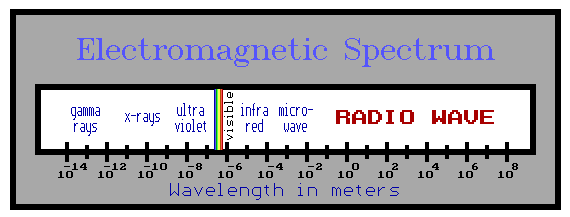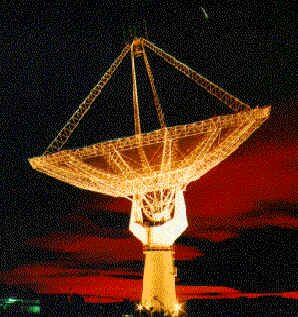|

Mapping the Radio Universe
The Application of the Fourier Transform in Radio Imaging

Forming an image isnt always as simple as opening your eye. The human eye detects the brightness (and color) of every point in the field of view to form an image. Yet there are many examples of images that cannot be formed this way: images of the brain in C.A.T. scans and the images of distant galaxies far away in the Universe. None of these "images" can be formed as easily as the human eye is able to perceive, or a camera is able to photograph. Mathematics is widely used in producing such images, utilising sophisticated mathematical techniques and theorems.
Astronomers make use of the mathematics of the Fourier Transform and a related theorem to produce stunning radio images of galaxies and other astronomical objects. The branch of astronomy concerned with the radio waves we receive from astronomical objects is called Radio Astronomy.
Radio Astronomy was born entirely by accident when, in 1931, an engineer named Karl Jansky, working with an antenna in New Jersey, U.S.A., noticed something odd about a radio signal that he received from the sky. This signal varied its direction during the day, and over the seasons, leading Jansky to conclude that it came from an extra-terrestrial or astronomical source. What he had found were radio waves streaming towards us from the center of the Milky Way!
Janskys discovery led to the realization that the stars and galaxies that emit visible light also emit other kinds of electromagnetic radiation, like radio waves.
Radio waves are a class of radiations belonging to the family of electromagnetic waves which includes light waves and x-rays (see diagram of electromagnetic spectrum). Radio waves have large wavelengths, from a millimeter to a few kilometers.
These radio waves are commonly produced in astronomical phenomena by thermal processes or accelerated charged particles. It may seem surprising, but by observing the Universe in radio waves, we get a very different view from the optical picture.
 
Radio astronomy has revolutionised our understanding of the Universe dramatically in the last 50 years. It has given us a whole new set of things to look at and to explain. We can now peer deeper into the Universe and come closer to answering the fundamental questions of the birth, evolution and fate of the Universe.
To detect radio waves a radio telescope is used, usually in the form of a dish antenna. This dish antenna is able to measure the electromagnetic radiation incident on it from a certain direction in the sky. To be able to form an image, the detecting device must have good resolution.
Copyright © 2022 ICICI Centre for Mathematical Sciences
All rights reserved. Send us your suggestions at
|